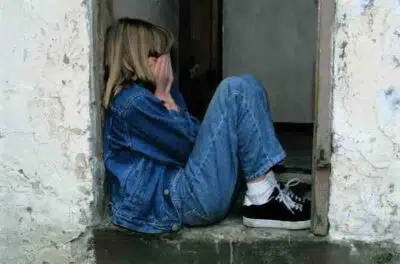I used to run in the same circles as a very popular local school superintendent who would open his public speaking engagements with the words “Kasserian ingera,” a Swahili phrase that means “How are the children?” It is a traditional greeting among the Masai, who believe that the worth of culture could best be measured by the social and emotional state of its youngest citizens. The traditional response is “The children are well.”
I do not believe this question could possibly elicit that response here in America today. The children are not well. In fact, they are doing very poorly.
As adults, we are all struggling to deal with “lockdown fatigue,” tired of living two years on an emotional seesaw that endlessly teeters between hope and fear. You cannot turn on the news, attend a social function or speak to any living human being without being flooded with stories and opinions about COVID, vaccines, masks, mandates, shortages, and the like. We wade through endless piles of conflicting information, trying to make heads or tails of it. We stare at empty supermarket shelves and skyrocketing prices wondering how we’re going to make it and fearing for the future.
For the children, it is all of the above and more.
COVID and its resulting lockdowns and restrictions have taken a tremendous toll on America’s young people. They are knee deep in the middle of the third year of disrupted and often chaotic education. Their schedules have been destabilized, their recreational activities have been cut off and their social interactions have been spotty at best. Anything they plan is always footnoted with “unless someone gets sick” or “unless the numbers spike.”
Our young people have been driven even deeper into communicating electronically and many have lost the ability to keep up a conversation in person without feeling anxiety or even panic. Many are dealing with illness or the loss of a loved one. Still, others are reeling from drastic changes to the family’s financial status.
All of these issues have combined to create a new epidemic of serious mental health issues sweeping through our younger population. Studies indicate that depression and anxiety rates among children have doubled since March 2020 and there has been an alarming increase in the number of suicide attempts and successful suicides among adolescents.
The escalation of mental health issues since the pandemic is not unique to younger people, so people of all generations are entering mental health treatment in droves, resulting in shortages of available providers. The mental health treatment community is now stretched very far. Many mental health practitioners have scarce availability to see younger patients because their afternoon and evening appointments are booked solid (the same problem applies to adults with full-time jobs). I speak to anguished parents every day who tell me they called a dozen different therapists and I am the only one who even returned their call.
I am not trying to be a Debbie Downer here. I am just emphasizing the gravity of the mental health situation because help is not exactly “just a phone call away” anymore. With that in mind, if you think your child or teenager needs to speak to a professional (or if they ask to see one) it is best to jump on it right away because it can take a bit of effort to secure an appointment. If you get nowhere, call your insurance provider. Many of them have case managers who will call around for you to see who has availability.
COVID has taken its toll on all of us and it is important to remember that children/adolescents are not immune to the multiple tsunamis of chaos that have swept our country since March 2020. They are not experiencing a “typical” childhood. In the past, “wait and see” was sometimes an okay approach to handling a young person’s emotional distress, but today it is probably best to take an “if there’s smoke there’s fire” stance and seek professional help as soon as reasonably possible.
The opinions expressed in this column should not be considered a substitute for professional advice.
This article was originally published in The Messenger Papers.
You can comment on the article after the ads (please be polite to commenters), and subscribe to the Daily Newsletter here if you would like a quick view of the articles of the day and any late news:




If that’s your only takeaway, I pity you. Oh and you’re wrong.
http://www.imthird.org/kasserian-ingera/
https://moodle.community.ecml.at/pluginfile.php/444/mod_resource/content/3/Kasserian-ingera.pdf
….. Kasserian ingera is Swahili for: “How are the children?”
No it’s not. Swahili for “how are the children is: “vipi watoto?”
Guess the “very popular local school superintendent,” was a bullSchiff artist.
Unakaribishwa!
We need a hashtag, a hashtag with a masked poop emoji avatar.
Groom them young for a life of living in the dark while being fed crap.
Disclaimer-a cynic at 18 years old.